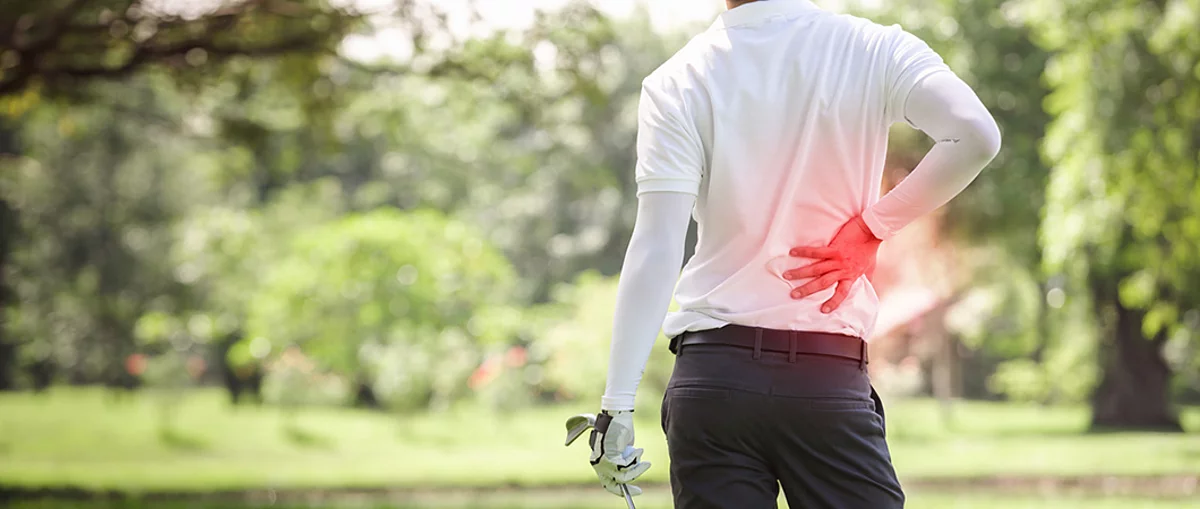First and foremost, never underplay the importance of warming up and stretching – it’s your key to preventing any golfing injury caused by repetitive movement.
Elbow tendonitis
Golfers can suffer from both tennis elbow and golfer’s elbow due to repeated swinging – yes, there is a (slight) difference. Tennis elbow affects the outside of the elbow and forearms, whereas golfer’s elbow hampers the inside. To avoid tendonitis, try not to use your wrist and elbow more than the rest of your arm and spread the load across larger muscles. Make sure you use lightweight equipment with a large grip area to minimise tendon strain. Also, you can’t go wrong with using gloves which increase grip.
Non-specific low back pain (NSLBP)
Pain, soreness, aching and stiffness to the lower back is harder to determine a cause for, and is often labelled as ‘non-specific’. Nonetheless, lower back problems make up roughly 30% of all golf injuries that occur. To avoid this, it is important to work on your technique, increase flexibility in the spine and hips, and keep active, rather than taking extended periods of rest.
Meniscus tears
Your meniscus is specialised cartilage found in your knee – between the shin and thigh bone. While it’s there to protect you, your cartilage can still tear, either due to sudden movements or a more gradual build up over time. To avoid it, reduce pressure by trying out softer spikes on shoes, clubbing down, and rotating your leading foot outwards a tad. Take extra care when hitting long distance shots. Using a buggy to get around the course might not go amiss either…

Rotator cuff injury
While the shoulder can be injured in many ways, rotator cuff (a group of four muscles in the shoulder) injuries are the most common cause of shoulder pain. Acute trauma and degeneration are largely to blame for inflammation, injury and tears. To avoid damage to the structure that moves and controls your shoulder joint, create a balanced programme where you increase the strength of all muscle groups, aided by some shoulder exercises.
Wrist/hand tendonitis
Your leading hand (whether right or left) is most susceptible to injury, which can build up over time from overuse or occur from a hard hit. Most commonly, problems are due to tendon inflammation. To avoid this, use your practice swings to work on technique. The little things will help too, such as equipping yourself with high quality gear, using fatter grips and playing on clubs with graphite shafts and irons that are cavity-backed (this reduces the vibration of impact).
For all of the above, consider getting some coaching on how to improve your technique and seeing a physiotherapist who can help you increase strength in all areas needed. See your GP if you think you have signs of an injury.

How to avoid the 5 most common golf injuries
Don’t let injury get in the way of bringing your A-game…
RECENTLY VIEWED
